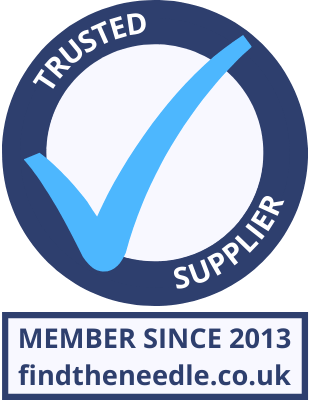 Add My Company
Add My Company
Sign In

Successful outcomes of welding inspections for EN 1090 are critical to achieving overall compliance with the regulation. It can be complicated, especially without an understanding of the regulation itself and a process to comply with it. So, in this blog, we get to the heart of the matter – ensuring every single weld makes the grade.
Welding is an integral part of steel fabrication, enabling flexibility of design while giving stability to a structure. However, welding can also change the characteristics of metal, thereby threatening the integrity of its CE marking. Under regulation EN 1090, this is a non-compliance issue because the structure is deemed a threat to human life. It’s as simple as that.
For this reason, EN 1090 requires steel fabricators to have a Welding Quality Management System (WQMS). Central to the quality system is a well-defined and documented process which includes a Welding Procedure Specification (WPS) for every project. The WPS is the written document that contains all the information a welder requires to proceed including: settings, technique, base material and filler metals.
Finally, the whole enterprise must be overseen by a Responsible Welding Co-ordinator (RWC).
The role of the RWC
The RWC is in charge of welding inspections for EN 1090; their role is to manage and supervise all welding activities, and ensure the steel structures meet the required levels of mechanical resistance, stability, serviceability and durability. Given the amount of structural work that Alroys undertakes, it makes sense for us to have our own RWC rather than use the services of an outsourced professional.
The key responsibilities of the RWC are as follows:
• Knowing inside out the relevant standards, regulations and specifications
• Ensuring welders are suitably qualified and conditions to weld are safe
• Detecting and assessing defects, managing the fix and, most importantly ensuring they are avoided in the future. (All welds exhibit some imperfections; the skill is in determining what if any remedial action to take: repair or adjustment to the process, or both?)
• Documenting the entire process to enable a clear audit trail of compliance
It’s worth emphasising that welding inspections for EN 1090 are very specific; the acronyms alone take a special skill…
The RWC’s duties before welding
Before welding starts, the RWC must carry out a series of ‘flight checks’:
• The material: identify and trace to a test certificate; ensure it’s free from damage and contamination and in accordance with the WPS and drawings
• WPS & drawings: make these documents available to the welder
• Weld preparations: these must be in accordance with the WPS and / or drawings
• Welder qualifications: check these are valid and up to date
• Welding consumables: ensure these are as specified by the WPS, then observed according to the quality procedure
• Safety regulations: confirm these are in place, including equipment in a suitable condition and readily available, and that appropriate natural ventilation, fans (filters) and face masks are being used.
The RWC’s inspection during welding
During welding, the RWC needs to ensure the following actions are fulfilled:
• Location: that the conditions are suitable and safe (including the weather if on site)
• Process: welding is accurate according to the WPS and any available drawings
• Temperatures: from pre-heating to inter-pass, that the correct temperatures are being reached
• Parameters: that currents, volts and travel speed are correct.
The RWC’s inspection after welding
The above ‘before’ and ‘during’ inspections will make the following after-weld checks easier and quicker:
• Identification: that each weld is identifiable according to the drawing
• Appearance: each weld must meet a visual inspection to at least ‘good workmanship’ level, including cleanliness
• Dimensions: these must be accurate according to the drawings
• Completion: check that the welds are finished and complete in every way
• Modifications: ensure that any ‘in progress’ modifications are documented
• Documentation: all reports and records are completed as required
If there are any defects in the welding process, corrective action must be taken.
Weld defects and corrective action
Defects and the need for corrective action arise for many reasons. The important thing is to spot them early on and learn how to avoid, or at least minimise, them in the future. Here are 3 examples of corrective action to common defects:
• Temperature too high or travel speed too low causing overlap where metal flows onto the surface without fusing
• Using clamps and wedges to prevent linear misalignment
• Improving welder skill to reduce splatter
Repair is generally the remedial action, though sometimes rewelding is impracticable. It’s also important to be clear about the application of the finished item as well as the standard required by the customer.
Welding inspections for EN1090
Welding inspections for EN1090 are integral to compliance with the regulation itself. Nothing beats experience and knowledge, combined with good process and an eye for detail. If your ‘approved fabricator’ can’t meet the exacting standards of EN 1090, get another fabricator!
For more information on What’s involved in welding inspections for EN 1090? talk to Alroys Sheet Metals Ltd
Enquire Now
List your company on FindTheNeedle.

